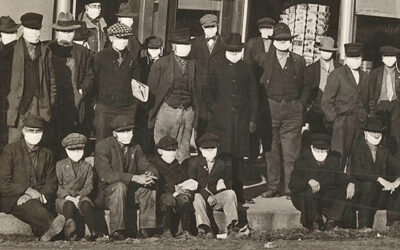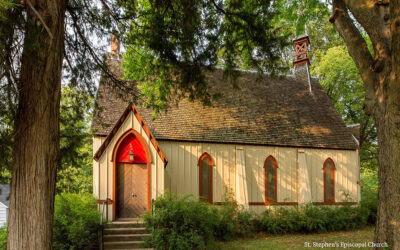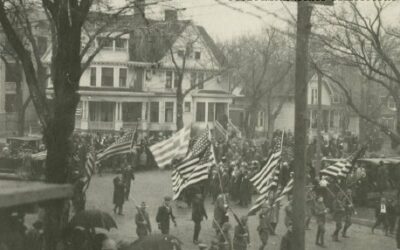The Pawnee, who lived widely across Nebraska, are represented in a large collection of the state’s archeology.
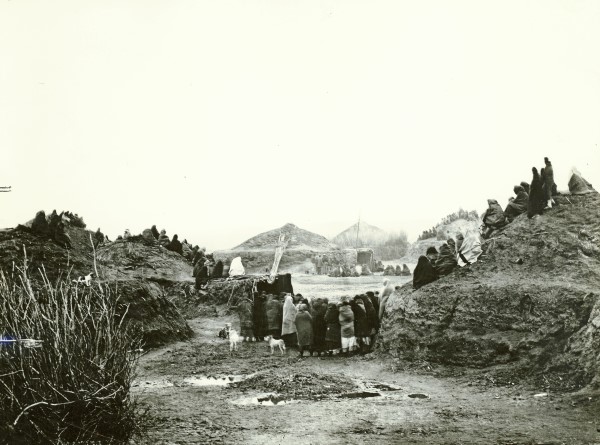
(“Pawnee Loup Fork Village near Genoa, Nebraska, 1871.” RG2065-1-1)
By Breanna Fanta, Editorial Assistant
Nebraska archeology is well known for its collection of Pawnee-related artifacts and research.
The Pawnee (or the ‘Chaticks-si-Chaticks’ as they call themselves) lived widely across present-day Nebraska, though their exact origin and the timing of their migration to Nebraska are unknown.
The Pawnee are a Caddoan-speaking people, sharing a similar language to the Wichita and Arikara tribes. Their ancestors migrated north to the Nebraska and Kansas regions.
These early migrants, referred to as the “Central Plains Tradition,” lived on isolated farmsteads and hamlets across Nebraska near rivers and creeks. They constructed homes using timber and wattle-and-daub (mud plaster over woven sticks).
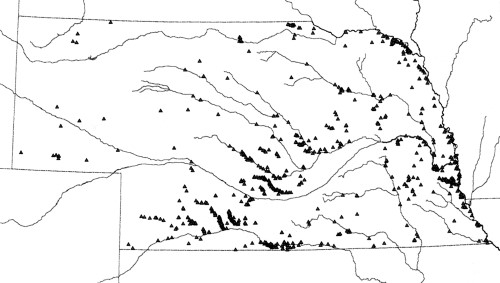
(“Central Plains Tradition archeological sites.”)
The Central Plains Tradition remained in the region until a severe drought about 600 – 700 years ago. Most people left the central plains. “It was a time of interaction and even conflict with other northern tribes,” wrote archeologist Rob Bozell in the Winter 2021 issue of Nebraska History Magazine.
About 200 years later, when the climate improved and the tribes returned to the area, there was a noticeable change in their artifact styles, architecture, and social organization.
They transitioned from farmsteads to large towns following the lower Loup and Platte Rivers, and the Central Republican Valley.
Several dozens of these earth lodge villages have been discovered in eastern and central Nebraska. The structures, dating back to the 1600s – 1870s, reflect the evolution of Pawnee architecture from square buildings to circular lodges.
These villages housed hundreds to thousands of people for decades, usually until local game and timber became depleted.

(“Cross section of a Pawnee earth lodge, showing interior arrangement of posts and beams: a, earth covering; b, grass, willows, and outer poles; c, edge of house pit; d, altar; e, secondary roof supports; f, cache pit; g, primary or central roof supports; h, firepit; i, smoke hole; j, entrance passage.”)
History Nebraska excavated many of these lodge ruins from the 1930s – 1970s and found an abundance of artifacts, providing insight on Pawnee subsistence, trade, and technology.
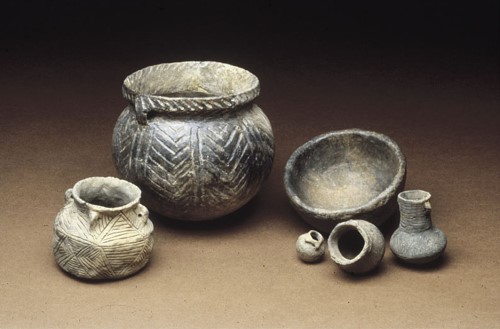
(“Finely crafted and distinctively decorated pottery was a hallmark of the Pawnees before sustained access to metal containers. The bowl is from Colfax County. The other pieces, which include four pots and a small bottle, are from Butler County.”)
Bison hunting was an important aspect of Pawnee subsistence. While the bison provided the people us with a source of food, by the early to mid-1800s they were also hunted for the Euroamerican bison robe trade.
Tribes that traveled to hunt their game established hunting camps. Several of these camps have been excavated, uncovering many butchered bison skeletons. These findings helped researchers learn more about the Pawnees’ economic cycle.
But as archeologists excavated these villages and hunting camps in the early-to-mid-twentieth century, they also began excavating nearby cemeteries. Hundreds of Pawnee ancestors were unearthed to study mortuary customs, health/disease, and demography.
By the early 1970s, Indigenous groups nationwide were objecting to the excavation of graves and eventually demanded the return of human remains and funerary objects for reburial. This eventually led to federal and state legislation protecting graves and requiring the repatriation of remains. (Rob Bozell, Walter Echo-Hawk, and Roger Echo-Hawk will tell that story in more detail in the forthcoming Summer 2022 issue of Nebraska History Magazine.)
“Due in part to the repatriation movement,” Bozell writes, “Pawnee archeology and that of other tribes is benefitting from a greater involvement by native scholars in telling the story of the tribal past through new interpretation of oral traditions, material culture, and places.”
The entire article can be found in the Winter 2021 edition of the Nebraska History Magazine. Members receive four issues per year.


